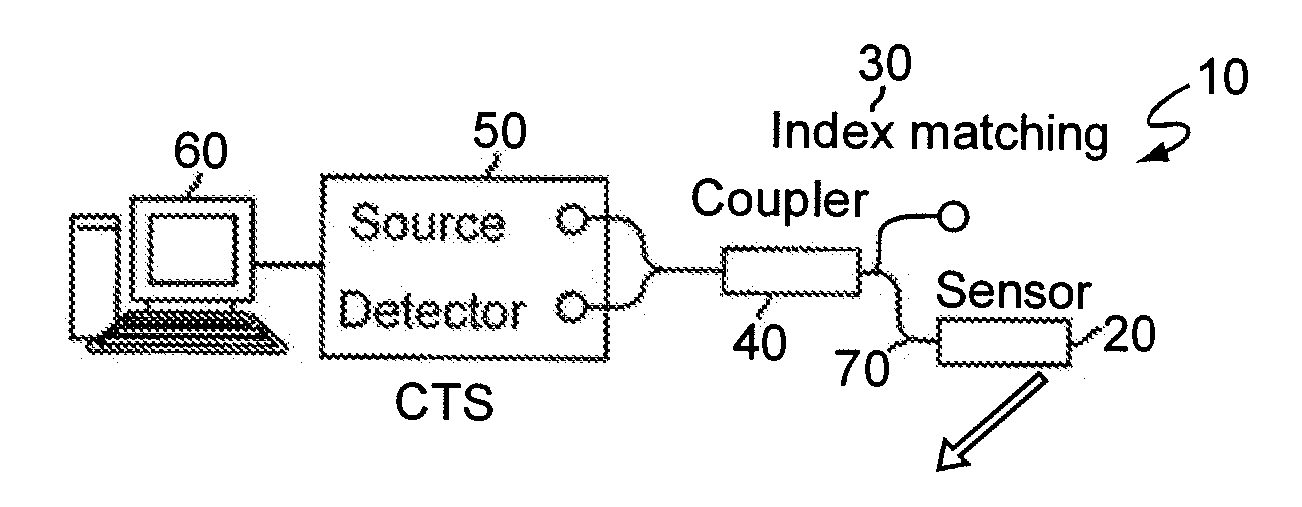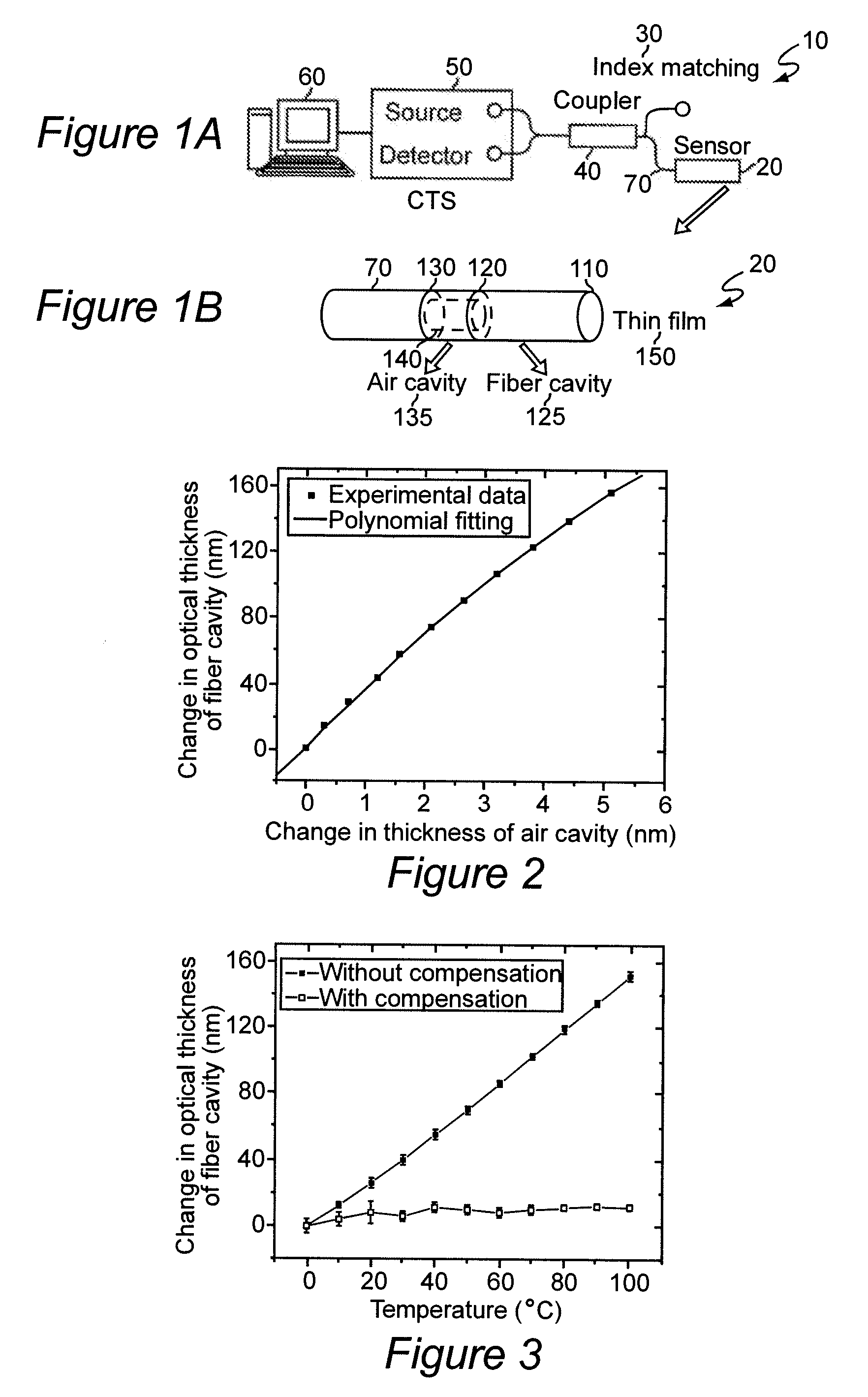Multi-cavity fabry-perot interferometric thin-film sensor with built-in temperature compensation
a thin-film sensor, interferometer technology, applied in the field of fiber optic sensors, can solve problems such as source of error, use of such labels, and compromise both sensitivity and specificity of the sensor
- Summary
- Abstract
- Description
- Claims
- Application Information
AI Technical Summary
Benefits of technology
Problems solved by technology
Method used
Image
Examples
Embodiment Construction
[0015] Referring now to the drawings, and more particularly to FIGS. 1A and 1B, there is schematically shown a multi-cavity Fabry-Perot interferometric (MFPI) sensor in accordance with a preferred embodiment of the invention. The MFPI sensor is distinguished by its simplicity, small size, high sensitivity, low cost and capability of measurement of ultra-thin films. Such thin films are normally characterized by x-ray scattering, near-field scanning optical microscopy, atomic force microscopy and other complex and costly laboratory techniques. However, since the changes in optical cavity length induced by the thermo-optic effect and thermal expansion have significant influence on measurement accuracy using MFPI sensors, it is necessary to introduce temperature compensation in order to perform high accuracy measurements at varying temperatures. The overall system shown in FIG. 1A is similar to some known systems and preferably includes a MFPI sensor 20, significant details of which are...
PUM
| Property | Measurement | Unit |
|---|---|---|
| optical thickness | aaaaa | aaaaa |
| temperature | aaaaa | aaaaa |
| optical thickness | aaaaa | aaaaa |
Abstract
Description
Claims
Application Information
 Login to View More
Login to View More - R&D
- Intellectual Property
- Life Sciences
- Materials
- Tech Scout
- Unparalleled Data Quality
- Higher Quality Content
- 60% Fewer Hallucinations
Browse by: Latest US Patents, China's latest patents, Technical Efficacy Thesaurus, Application Domain, Technology Topic, Popular Technical Reports.
© 2025 PatSnap. All rights reserved.Legal|Privacy policy|Modern Slavery Act Transparency Statement|Sitemap|About US| Contact US: help@patsnap.com



